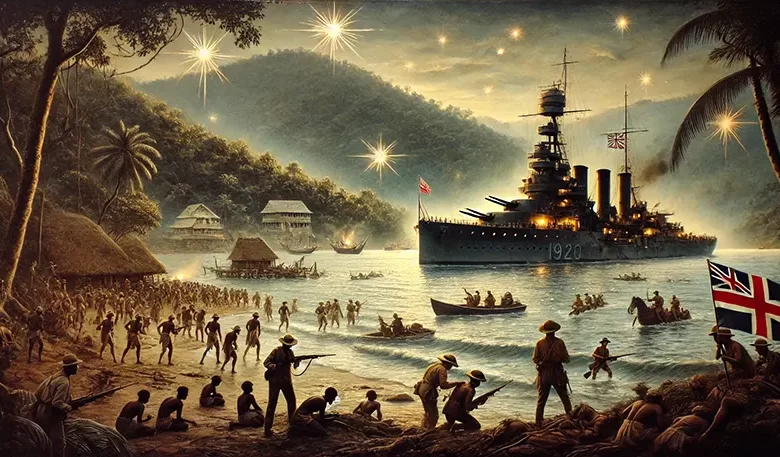HMS Delhi

HMS Delhi, a British Royal Navy light cruiser, played a crucial role in Dominica’s Kalinago Uprising of 1930. The uprising, also known as the Carib War, was a significant resistance movement by the Kalinago people against British colonial forces. Tensions arose due to the imposing colonial restrictions on traditional trade practices between the Kalinago and neighbouring French islands.
Role of HMS Delhi in the Carib War
The role of HMS Delhi in the Carib War was due to an escalating conflict; Administrator Edward Carlyon Eliot requested the deployment of HMS Delhi to the Atlantic Coast of the Carib Reserve, now known as the Kalinago Territory. The warship arrived and showed force by firing star shells into the air and using searchlights along the shore. This display was intended to intimidate the Kalinago, unfamiliar with such naval tactics.
Marines from HMS Delhi were landed to assist local police in searching for the leaders of the uprising. This military intervention increased fear and tension among the Kalinago, who fled to the mountains to escape the naval bombardment and the subsequent search operations.
The arrival of HMS Delhi and the actions taken by the British authorities highlighted the severity of the colonial response to indigenous resistance. The Kalinago Uprising underscored the ongoing struggle for autonomy and recognition faced by the Kalinago people during the colonial period. The use of HMS Delhi in this conflict remains a poignant reminder of the challenges and injustices experienced by Indigenous communities under colonial rule.




